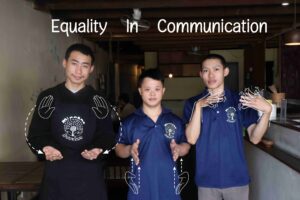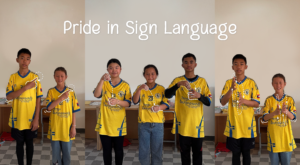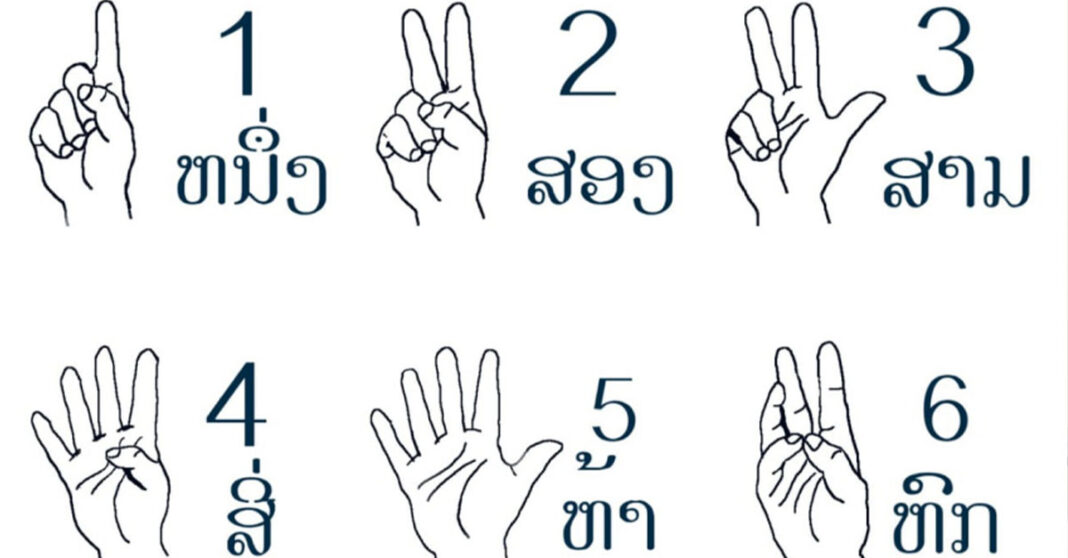In Vientiane, a quiet revolution is taking place at local coffee shops where deaf individuals are not just serving coffee but also breaking down barriers and redefining the workforce.
More than just places to grab a cup of coffee, cafes like Minnano and Joma Bakery among others are challenging societal perceptions and showcasing the potential of the deaf community.
Through training in sign language and professional barista skills, the café is proving that when given the chance, people with disabilities can excel, thrive, and contribute to the national economy.
With over 71,000 members, the deaf community in Laos is demonstrating their talents, potential, and professional skills.
However, a major barrier is the lack of qualified interpreters—there are only seven teachers across the country, while the number of students is much higher. This creates a significant gap in support and access to education for the deaf.
Efforts to promote sign language and empower the deaf community are helping create opportunities for them to showcase their abilities.
Sign language in Laos, which was first developed in 1993 and revised in 2006, aims to meet the communication needs of the deaf community.
However, through some initiatives like Hands of Hope School and Minnano Cafe, the deaf community is not only gaining access to education and employment but is also inspiring others with their strength and creativity.
Where Sign Language Meets Service

Minnano Café is one of the pioneers in this change. Since opening its doors in 2017, this business has provided long-term employment opportunities for people with hearing impairments.
The café’s goal isn’t solely to create a bright future for its deaf students; it also offers opportunities in essential fields like business, equipping them with the skills to thrive.
At this unique caféteria, baristas with hearing impairments welcome customers with a warm smile and a “Hello” conveyed through sign language.
The coffee shop is a project of the Asian Development with the Disabled Persons (ADDP), a Laos-based Japanese NGO dedicated to improving opportunities for people with disabilities.
Yuki Nakamura, the project manager, explained that the initiative was launched to promote sign language and create employment opportunities for people with intellectual disabilities.
Minnano Café bridges the communication gap between customers and staff by training its employees to ensure smooth interactions. The café also provides a hand sign book for customers to use when ordering, along with a display board showing hand signs to guide the process.
“If they really offer the chance to the hard of hearing people to be hired by other cafes, that’s also one good appealing point. We encourage other cafes to hire deaf individuals. They’re professional, they’re trained, wonderful staff. We really like to cultivate,” Yuki said.
Sign Language and Education

While cafes like Minnano and Joma Bakery are leading the way in offering employment opportunities to the deaf community, education also plays a crucial role in breaking down barriers.
Access to quality education equips deaf individuals with the skills and confidence to excel in various fields, including hospitality and beyond.
The Hands of Hope School, for instance, is helping to lay the foundation for long-term success by providing tailored education and fostering a sense of community for its students.
Many employees at the café are alumni of Hands of Hope Secondary School in Vientiane.
The institute was founded in 2021 and officially recognized as a school in September 2024. It currently serves 27 students, and has a staff of seven interpreters.
Vanphone Phukhammixay, a sign language teacher at the school, shared with the Laotian Times that the school was created to meet the unique needs of deaf students. It not only provides education but also fosters a sense of community, allowing students with hearing disabilities to live and learn together.
Vanphone’s motivation as a teacher comes from the impact she sees on her students. She’s inspired by their efforts in daily life, from study to activities. However, she feels their full potential hasn’t yet been unlocked, which led her to pursue her passion for teaching.
Driven to make a difference, Vanphone focuses on helping her students develop literacy, writing, and communication skills to support their independence and success.
“I have been a teacher here for many years, since I graduated,” she said. “My hope for the future is that my students will be able to have a good career and be independent.”
“We want the society to be open-minded in giving them opportunities and accept them fully,” Vanphone added.
Principal Hye Ja Lee added that the school strives to align its curriculum with the Ministry of Education’s standards, with teachers adopting a more progressive approach to accommodate the needs of deaf students.
Teaching deaf students presents unique challenges—many concepts don’t have direct sign language equivalents, and even slight variations in gestures can completely change the meaning.
Despite these challenges, the students’ talents often stand out. In November 2024, they had the chance to show off their artwork alongside other Lao artists at the Lao Contemporary Art Exhibition at Parkson Mall in Vientiane.
Bangsavanh ‘Bang’ Sibounheuang, a 15-years-old student with hearing impairment, expressed through sign language that his parents are both able to hear and they initially struggled to communicate with him. However, enrolling in Hands of Hope School allowed Bang and his parents to bridge this gap through written communication.
“I never knew how to draw before, but I learned in just a couple of months. Now, I can draw whatever I want,” Bang said. “When I grow up I want to be an interpreter.”
Mo Xiong, a 13-year-old student, also expressed her desire to communicate better with her family, who struggled with sign language. Through writing, she is now able to communicate more easily with them.
“I want to be a computer teacher when I grow up,” she said. “I also like to draw nature because it’s beautiful.”



